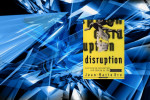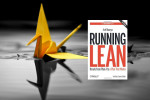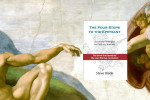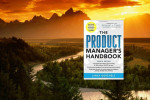Are You Design Driven?
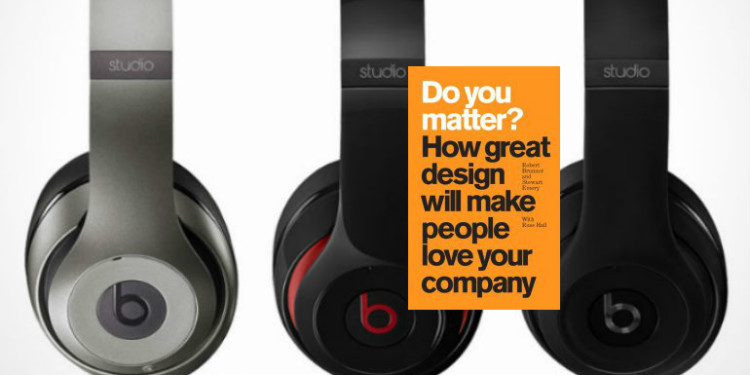
Do You Matter?: How Great Design Will Make People Love Your Company by Robert Brunner
Do You Matter? contains pointers toward a customer experience design approach. Because the goal of this approach is to establish an emotional relationship between products and customers, the road is not well marked. You won’t find techniques, frameworks, metrics, or action plans in this book. The authors meander through murky aphorisms as they highlight iconic brands like Apple, Nike, BMW and provide shining examples of over-and-above-the-call customer service. The authors only take you so far–by showing some examples of what they think is great design, they hope to inspire you to buy into the value of customer experience design. Once they have done that you’re on your own. They won’t tell you the steps to take, only that there appears to be a strong correlation between a design driven approach and business success. It’s up to you to execute on this vision and establish the success metrics. But in the midst of the truisms and halo effects, there are some interesting themes, a theory of life, and, of course, an acronym which sums up their method: FLAVOR.
Attitude is everything
Although the writing is filled with pithy exhortations like “Don’t play the game, change the game. Look to design to uncover new territory”, the authors do eventually admit that it is not possible to predict whether currently successful companies will be successful in the future. Along the way they offer a lot of paradoxical advice like “this is not about just saying yes all the time and always giving people what they want. That is not the right approach. It is about understanding their needs and desires, and meeting them.” Simple enough! This book won’t help you become design driven. Its goal is to get you to recognize the need to focus on the customer experience and design all aspects of your business around that. Once you see that as a worthwhile goal, the rest is up to you.
We know good design when we see it
The authors mention many brands in the book but presents contradictory examples and fail to draw meaningful parallels. Perhaps that is the nature of design, but it doesn’t help the reader:
-
IKEA – “What does catch your eye are the clean lines and solid clear quality of the products.” This only speaks to the physical product and not the overall experience, which the authors are not as bullish about.
-
Apple – “The iPhone is a great user experience. End of story.” That’s quite definitive on the author’s part, but anyone who has used the iPhone and iTunes knows there is plenty of room for improvment.
-
BMW – “It looks like a dark cat poised to chew up the road.” Outside of aesthetics, they miss the point that if I need to move dirt and bricks, BMW can’t solve my problems no matter how much their car looks like a leaping cat. Why wouldn’t I just choose a Mercedes, Lamborghini, or Tesla? To be fair, they do provide some insight into the development and application of the BMW design language , but that doesn’t even scratch the surface of why that automotive design works.
-
Beats by Dr. Dre – Brunner explains that “the products are endorsed and worn by actual celebrities. The headphones are objects of lust and sound amazing. The brand does not have to try to be cool. It is cool. And it is authentic.” How does Dr. Dre stack up against Skull Candy or yurbuds? Cool is hard to define. Actual celebrities wear all kinds of brands and cool can be here today and gone tomorrow.
-
THX – The authors claim that this brand is a portal to a richer entertainment experience, but its primary characteristic from their standpoint is ubiquity which doesn’t align with any of the attributes listed throughout the book.
-
Harley Davidson – The book doesn’t explain how Harley Davidson achieved this deep passion from its riders; however, brand loyalty, as measured by participation in company events, display of logos in stickers and tatoos, seems to be the attribute that puts Harley Davidson into the design-driven category. One unique aspect of the company is that most, if not all, employees own and use the product. This provides them with easier customer feedback by being in the same events as customers and experiencing the product themselves.
Liberally sprinkling statements like “Design is not a statement, but a dialog. It a story that needs to be written in a cohesive and flowing way” throughout the book, the authors eventually land on standard branding advice, which essentially amounts to the concept of “authenticity”:
- Decide who you are and for what you stand
- Identify why you are unique
- Own that identity fully
- Build it into everything
Design Language
Every time you see a suite of products where the function and form have merged to say a distinctive and positive thing to you that evokes an emotional response in you, you are experiencing design language
This book is a signpost pointing in the direction of customer experience design. The frequent ambiguous exhortations are a way to raise your awareness and establish the value of the approach. However, there are some key points the authors make to define design language:
-
Design language tells your story every time your customer engages with an aspect of your product or company. It involves the customer in the discovery of the way your product and service will lead to the solution of their needs and desires.
-
Creating a language is a process, not an event. It takes time establish and requires re-examination and reinvention.
-
Design language achieves communication to customers, brand definition, and relationship to end users.
Being Design Driven
When you make the shift to an integrated design experience that permeates all aspects of your company’s development, manufacturing, delivery, and follow-up flows, you end up with a far stronger brand
Design is a methodology you use to shape and create the relationship between you and your customer. Effective design requires continual reinvention and iteration around core values.
The authors say “It is the task of any company that truly wants to be design-driven to watch the customer experience metere as the barometer of its survival.” But what does the customer experience barometer meter measure? Reading between the lines, here are some common attributes:
Great customer service: The authors cite may examples of amazing customer service, like a woman getting chicken soup delivered at the W Hotel when she had a cold, that are right out of Tom Peters’ classic from 1982 In Search of Excellence. Exemplary customer service as a desirable trait has definitely stood the test of time. As the “last mile” of customer experience, how employees behave towards customers is typically a good indicator of how pervasive a brand’s customer focus is. The authors advise to “keep coming back to the idea of an experience and design toward it, embrace the vigilance of maintaining it, and remember the many facets.”
Start at the top: What many of the companies the authors mention have in common is a CEO who talks about customer experience and design and pays attention to the details. The leader of many of the companies they mention, from Starbucks to Chez Panisse believed themselves to be in the experience business, not the coffee or dinner business.
Look at your products and services from the eyes of the customer: “Do they start with how the customer feels?”
Identify a larger experience for which your product is a “portal”: Put the experience in the center and then working outward from there. Identifying a central product theme helps align all the details which have to managed to add up to a positive emotional experience.
Pay attention to all aspects of the customer experience: Many of the examples in the book include customer-facing staff, operational details, and physical environment.
Don’t start in the back office: The authors lambast companies who focus on back office operations and programs to affect customer experience. You need to start with the end in mind and design from the front inward.
Focus on the experience
I started an airline because the experience of flying on other airlines was such a miserable experience. — Richard Branson
Design means you are overtly creating, developing, prototyping, and manufacturing with customer emotion in mind. The book advocates taking a holistic view of design and does eventually offer some actionable advice: build the kind of scenarios your customers should experience and write stories your design language should be sharing. This infuses all customer interactions with the story of your brand. The authors consistently return to the concept of “designing ideas, not objects”–consistently building the entire customer experience outward from a core set of emotional and brand goals.
What a brand is
Your brand isn’t what you say it is, it is what your customers say it is.
Your brand lives in your customer’s heart. You can only influence it.
A brand is shaped and driven by what customers see, experience, and value. It begins by asking: “What are we designing for people, for what emotional response, and how do we do that?” One of the values of a strong brand is “when your brand communicates well, you create a context of expectations. The product is emotionally prequalified before the purchase is made.”
For Brunner, the strength of a company’s brand is an indication of the degree of design-drivenness the company has achieved. This is because only a relentless and permeating focus on brand values can create changes across all functional areas that will orchestrate and result in the emotional connection based on alignment of all experiential elements.
Brunner says a brand is the embodiment of a company’s character. If that’s the case, then every company will have a unique character, which cannot appeal to everyone. Is there such a thing as a universally appealing character? Does Apple’s character appeal to everyone? What is it about their brand that is universal?
The Flavor of Success
In the last chapter, admitting that successful companies wax and wane, the authors reveal their perspective: “So, we’re not going to give you models to watch and copy, but examples of what works or doesn’t work so you can understand the design-driven approach and use it yourself.” In the same sentence in which they say they disdain business book acronyms, they unveil their acronym for success: FLAVOR
-
Focus – Keep an eye on the customer experience; that is your guiding light.
-
Long-Term – Take a long term approach; success doesn’t happen over night.
-
Authentic – Walk the talk. It is true that everyone can sense whether an employee or a product reflects the words of the brand promise. As teh authors put it, if your slogan is “we care” you had better do that.
-
Vigilant – Watch every part of the customer experience supply chain. Keep the links intact.
-
Original – Like a zen koan, the authors advise to be innovative but not derivate.
-
Repeatable – If you can’t repeat success, you haven’t found the key to being design driven.
FLAVOR isn’t enough to build a great and sustainable business, but it’s a good start.
Emotion is the connection
People justify purchase decisions with reason and stay connected through emotion
If you do not establish the emotional connection, you have lost the long term game. To create the emotional link requires thoughtfully designing the experience by first identifying what emotion you want to arouse.
In one of their few original insights, they point out that in business we tend to shy away from most things emotional. This is the one defining theme in what is otherwise a run of the mill business book–the focus on the emotional. As that goal is ephemeral, so their writing is paradoxical as they chase that concept. It’s a good counterpoint to the objective, logical, and materialistic values that drive business are often at the center of literature on business success. And it’s a good reminder to bring the human element into what is often a mechanistic and soul-less domain.
Research is a double-edged sword
Unsurprisingly, the authors are not fans of research. They use their usual ambiguous language to describe their thoughts: “Research is a tool to be used diligently and appropriately. It’s not the end-all. A lot of times, if used improperly, it can actually lead to bad design, or even worse, mediocre design.” For them the goal of the research, relative to design, is to discover an opportunity, design to the opportunity, and then validate what you’ve come up with to see if you’ve done it right.
And so are metrics..
The fact is, there aren’t clear metrics, and if you try to [measure] too often, you actually hurt the situation
So, what to do? They suggest that “some of it is a leap of faith, and there you either need to develop the razor-edge instincts of a consumer–and we think Apple has done that–or you need to hire talent,inside or outside, to help you develop a culture that is able to do all this.”
The next chapter doesn’t help much either: “…you have to measure and reward people accordingly. Everyone should have their impact on the customer experience defined and understood, metrics need to be developed, and people must be rewarded for achievement. Everyone.” Does that happen at Apple or BMW or Nike? Use metrics or don’t use metrics? It’s hard to boil down great products and great experiences but a key set of metrics can indicate whether you are on the right path.
The truth about life
What to people really want out of life?…People are seeking a great experience out of being alive
That’s pretty hard to argue with because “great experience” covers just about everything a human might define as worthwhile and desirable. Since “human beings do whatever they do based upon an expectation that their experience will be the better for it”, it’s up to you to create those experiences with your products and services.
Final thoughts
Design is a methodology you use to shape and create the relationship between you and your customer
1. Design matters – Design is the method that translates the idea of your brand into tangible products, services, and ultimately experiences.
2. Design is a process, not an event – You’re never done.
3. If it was easy, everybody would do it – If nothing else, this book demonstrates that it’s certainly not easy to explain how to be design driven so, of course, it is hard to do.
And just in case you were wondering: “It takes money. No way around it.”
Do You Matter?: How Great Design Will Make People Love Your Company (paperback)


